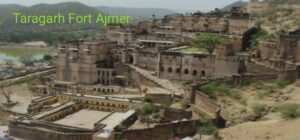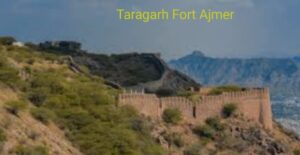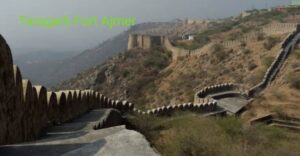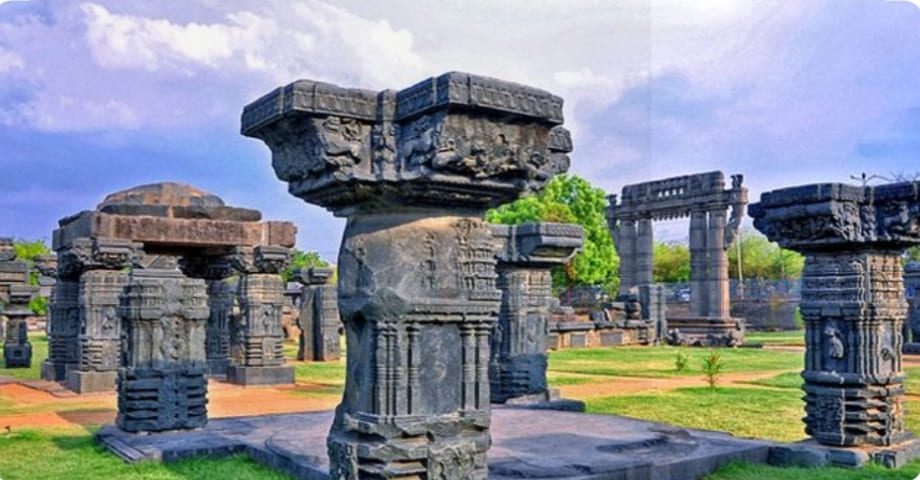Located in the heart of Rajasthan, the majestic Taragarh Fort Ajmer is a remarkable monument that stands as a testament to the region’s rich history and architectural prowess. Known for its strategic importance, stunning views, and intriguing history, this fort has attracted tourists, historians, and architects alike. In this blog, we’ll dive deep into the history, architecture, significance, and visitor experience of the fort, making it a perfect guide for those planning to explore this timeless marvel.

1. The Historical Significance of Taragarh Fort Ajmer
Taragarh Fort, built in the 12th century by Ajaypal Chauhan, the ruler of Ajmer, is one of the oldest forts in India. Its history is intertwined with the rise and fall of various dynasties that ruled Rajasthan, making it a pivotal landmark in Indian history.
– Foundation and Early Days: The fort was originally built as a military outpost, with its main purpose being the defense of Ajmer from invasions. During its early days, the Chauhan dynasty ruled this region, and the fort played a key role in their military operations.
– Role During the Mughal Era: With the rise of the Mughals, Ajmer, and Taragarh Fort became strategically important. Emperor Akbar is known to have visited the fort during his campaigns in Rajasthan. The fort’s strategic location allowed the Mughals to control the surrounding regions effectively.
– Maratha Invasion: The fort witnessed many battles, especially during the Maratha invasion in the 18th century. Despite the fort’s grandeur and strength, it was eventually captured by the Marathas, adding another chapter to its historical legacy.
2. The Architectural Grandeur of Taragarh Fort
One of the most captivating features of Taragarh Fort is its impressive architecture. The fort’s design is an amalgamation of Rajputana and Mughal styles, reflecting the cultural fusion that occurred during the various reigns.
– The Structure and Layout: The fort is perched on a steep hill, offering a panoramic view of Ajmer city and the Aravalli ranges. The layout is designed to be both defensive and aesthetic, with large walls, bastions, and gates. One of the most famous gates of the fort is the Lakshmi Pol, known for its intricate carvings.
– Water Reservoirs: A unique feature of the fort is its water reservoirs. In the past, these reservoirs were designed to supply water during times of war or drought. They are considered architectural marvels due to their ingenious engineering.
– Bhim Burj and Cannons: The Bhim Burj, one of the largest battlements in India, is housed within the fort. This site was once home to huge cannons that were pivotal in defending the fort. These cannons, now a relic of the past, tell tales of the battles fought to protect this fortress.
– Miran Saheb Ki Dargah: Inside the fort complex is the dargah of Miran Saheb, the governor of the fort who sacrificed his life defending it. The dargah is a place of historical and spiritual significance, attracting visitors who come to pay their respects.

3. Exploring Taragarh Fort Today: A Traveler’s Guide
For modern-day explorers, Taragarh Fort offers a rich experience, blending history with natural beauty. Visitors can roam the vast expanse of the fort, enjoy panoramic views, and delve into the rich past of Rajasthan.
– Best Time to Visit: The ideal time to visit Taragarh Fort is between October and March, as the weather during these months is pleasant. The summer heat can be intense in Rajasthan, making it difficult to explore the fort during the daytime.
– How to Reach: Taragarh Fort is located just 3 km from Ajmer city. Visitors can easily reach the fort by hiring local taxis or auto-rickshaws. The nearest railway station is Ajmer Junction, well-connected to major cities in India.
– Trekking to the Fort: Adventurous travelers can also opt for a trek to the fort. The trek is moderately difficult but rewarding, as it offers stunning views of the city and surrounding landscapes along the way.
– What to Expect Inside: Once inside the fort, visitors can explore various historical sections, including the dargah, the water reservoirs, and the Bhim Burj. There are plenty of spots where visitors can enjoy photography, making it a must-visit for history buffs and nature lovers alike.
4. Taragarh Fort’s Role in Local Culture
Taragarh Fort isn’t just a historical monument—it plays a vital role in the cultural heritage of Ajmer and Rajasthan. The fort is often the backdrop for local festivals and cultural events, celebrating the history and traditions of the region.
– Festivals and Celebrations: Local festivals like the Urs of Miran Saheb are celebrated at the fort, attracting devotees and tourists alike. These festivals are a perfect blend of spirituality and culture, offering a unique experience for visitors.
– Cultural Impact: The fort has been featured in many stories, poems, and folklore that are still passed down through generations in Ajmer. It holds a place of pride in the hearts of the locals, representing the valor and resilience of their ancestors.

5. Nearby Attractions Around Taragarh Fort
While Taragarh Fort is the main attraction, there are several other noteworthy sites in and around Ajmer that visitors should not miss.
– Ajmer Sharif Dargah: One of the most famous pilgrimage sites in India, the Ajmer Sharif Dargah, is just a short distance from the fort. It is the tomb of the Sufi saint Khwaja Moinuddin Chishti, drawing millions of devotees each year.
– Ana Sagar Lake: A scenic spot near the fort, Ana Sagar Lake is perfect for those looking to relax and enjoy nature after exploring the fort. The lake was built in the 12th century and offers boating facilities.
– Adhai Din Ka Jhonpra: Another historical site near the fort, Adhai Din Ka Jhonpra, is a mosque built in 1199 AD. Its architecture is a fine example of early Indo-Islamic design and is a must-see for history enthusiasts.
Conclusion:
Taragarh Fort is a timeless reminder of Rajasthan’s glorious past. Its historical significance, architectural brilliance, and panoramic views make it a must-visit destination for travelers. Whether you’re a history buff, an architecture enthusiast, or simply someone looking to explore Rajasthan’s rich heritage, Taragarh Fort offers an experience like no other.
With its rich history, cultural importance, and stunning vistas, Taragarh Fort stands as a beacon of Ajmer’s royal past. So, if you’re planning a trip to Rajasthan, make sure to include this iconic fort in your itinerary and witness the grandeur of a bygone era firsthand.
FAQs:
1.Why is Taragarh Fort famous?
2.Is Taragarh Fort worth visiting?
3.What is the height of Tara Ghar Ajmer?
4.What happened to Taragarh Fort?
5.Taragarh fort ajmer distance
6.Ajmer Fort wikipedia
7.Taragarh fort Ajmer history
8.Taragarh Fort Ajmer History in Hindi
9.Where is taragarh fort built
10.Taragarh Fort Ajmer photos

